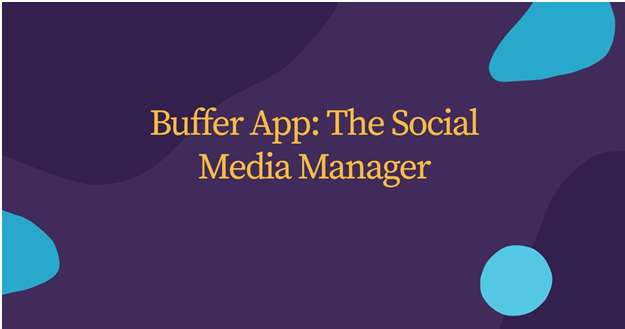You’ve perhaps listened to BufferApp, but you may not know about some of its superior points. Continue with this article to find out every step you want to know about using Buffer for social media management.
What does Buffer do?
BufferApp lets users operate a series of social media accounts, outlining up updates to be shared in the future over a series of social networks.
Each time you see a post you want to share, a tweet you need to retweet, or whenever you write some content that you need to share out over time, you can sum it to your Buffer. This puts it in a line, and the posts are sent out in series. At times you have already selected.
This signifies you don’t want to pick a date and time for each single post you wish to program. You add it to your chain, and Buffer does the job for you.
Buffer has a soft, clean interface that is improved by fixing its browser extensions. A lot of its best service comes from these additions. Extensions are available for Chrome, Firefox, Safari, and Opera and can be seen here.
Now, let’s jump in and take a nearer look at how to use Buffer to handle your social media accounts.
Attach your social media accounts to Buffer
When you have made your Buffer account, you must start connecting your social media accounts, which you can do on this page.
You can connect accounts from a variety of social networks to your Buffer. You can pick from:
- Facebook Page
- Facebook Profile
- Facebook Group
- LinkedIn Profile
- LinkedIn Page
- App.net account
- Google+ Page.
Plan posting times
For every account you connect, you can plan the times that posts should be shared. These can be varied for all accounts. This is excellent because you likely need to post more often on Twitter, for case, than you do on your Facebook Page.
Click on Schedule on the menu over the top of the page.
You can set various times for distinct days of the week, or set times each day, each weekday, or each weekend.
Begin buffering posts
Now, you’re set to begin adding posts to your Buffer to share. There are a series of steps to do this.
- Add posts on the Buffer website.
Insert the text and any links you need to share in the box at the top of your list of updates. If you have more than one social account, you can choose the account you want to post the photo. If one of those is a Facebook account, you will display how the link will look.
Then, you click Add to Queue, and the post will be sent out in the expected course.
- Share posts with the Buffer browser extension
You can share it directly by clicking the browser extension button to reach any blog post or website. A related pop-up will arise, including proposed text to be shared, the page’s title, and a short link to this page. Edit the text for the update, pick which accounts you want to share it by, and then add it to your queue.
- Buffer a Retweet in Twitter
The capability to buffer retweets is beneficial. With tools like Hootsuite, you can only program retweets if they are in the former setup, though, with Buffer, you can program modern style retweets from the Twitter website.
When the extension is installed, under every tweet, you will view the Buffer icon. When you click the Buffer icon, the usual interface will appear, and you can plan the retweet to be shared from what so ever Twitter accounts you want.
- Share an image by Buffer.
Pictures capture people’s consideration and can boost engagement and clicks on social media. Buffer’s extension allows you to share the photos you see on the web.
If you have the extension installed, a Share Image key rises in the bottom right-hand corner when you fly over an image.
Sometimes, this button does not appear. In that state, you can right-click on a picture and pick Buffer this image.
In both states, this then makes up the pop-up box so updates can be customized.
- Share featured text with Buffer.
A Buffer hack that few people know about highlights text and listing it to post on social media.
Not much of copy and paste
As soon as you have the extension installed, all you have to do is feature some text on a page and right-click. Following, pick Buffer’s chosen text, and the pop-up box will look for you to list it.
Conclusion
Have you used BufferApp for social media management? If not, so now it’s time to install the buffer app and take advantage of its advanced features. let us start with the Bufferapp and operate multi applications at once.
Author Bio:
Naman Modi is a Professional Blogger, SEO Expert & Guest blogger at NamanModi.com, He is an Award Winning Freelancer & Web Entrepreneur helping new entrepreneur’s launches their first successful online business.
